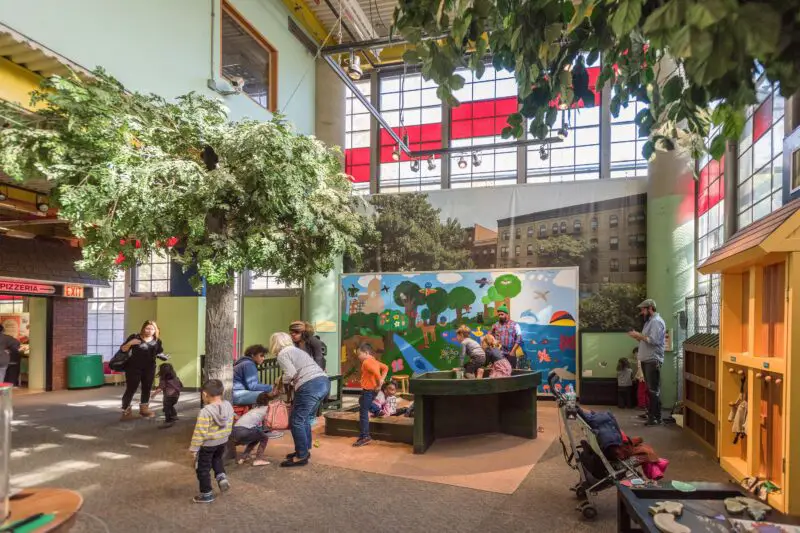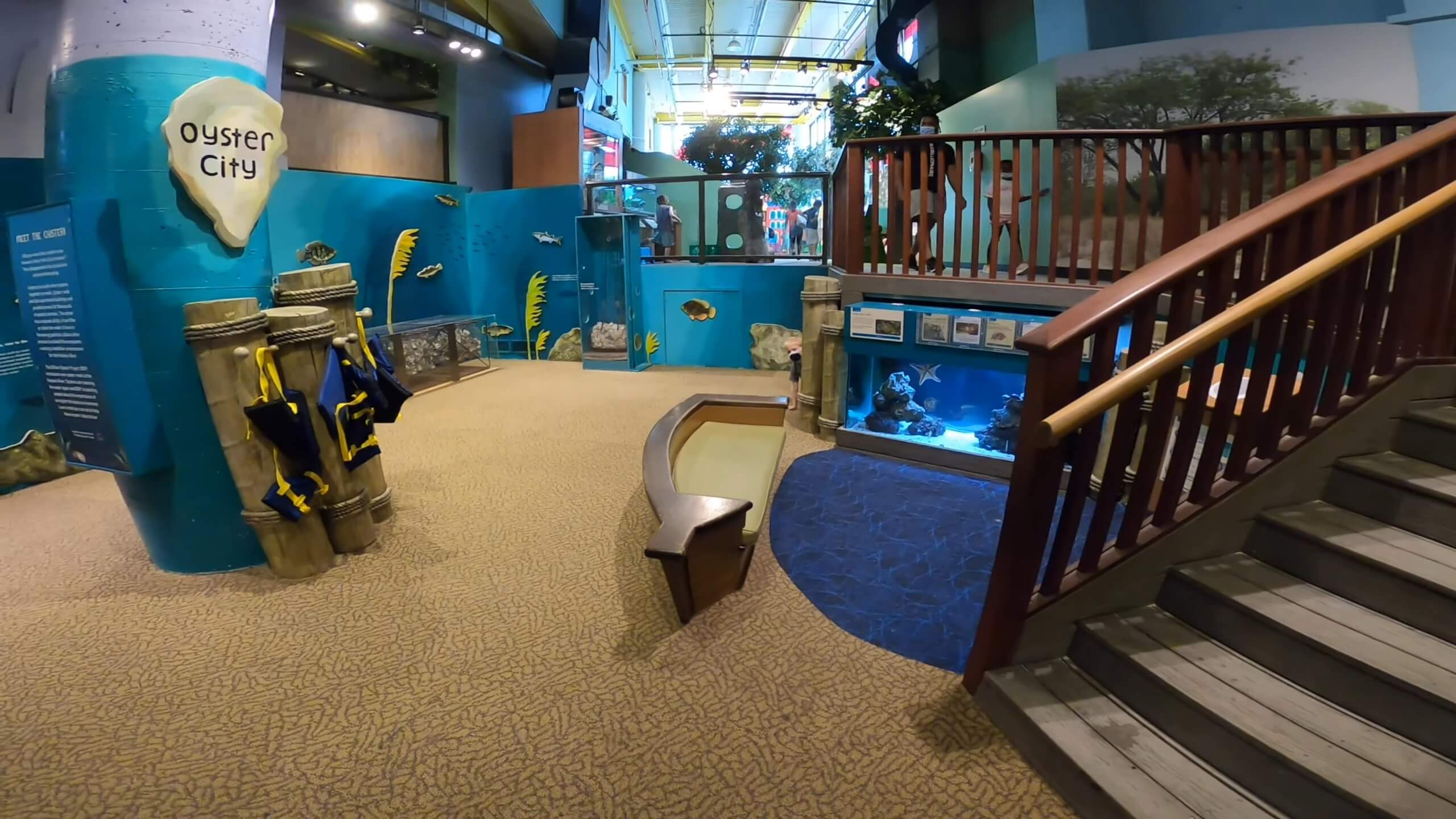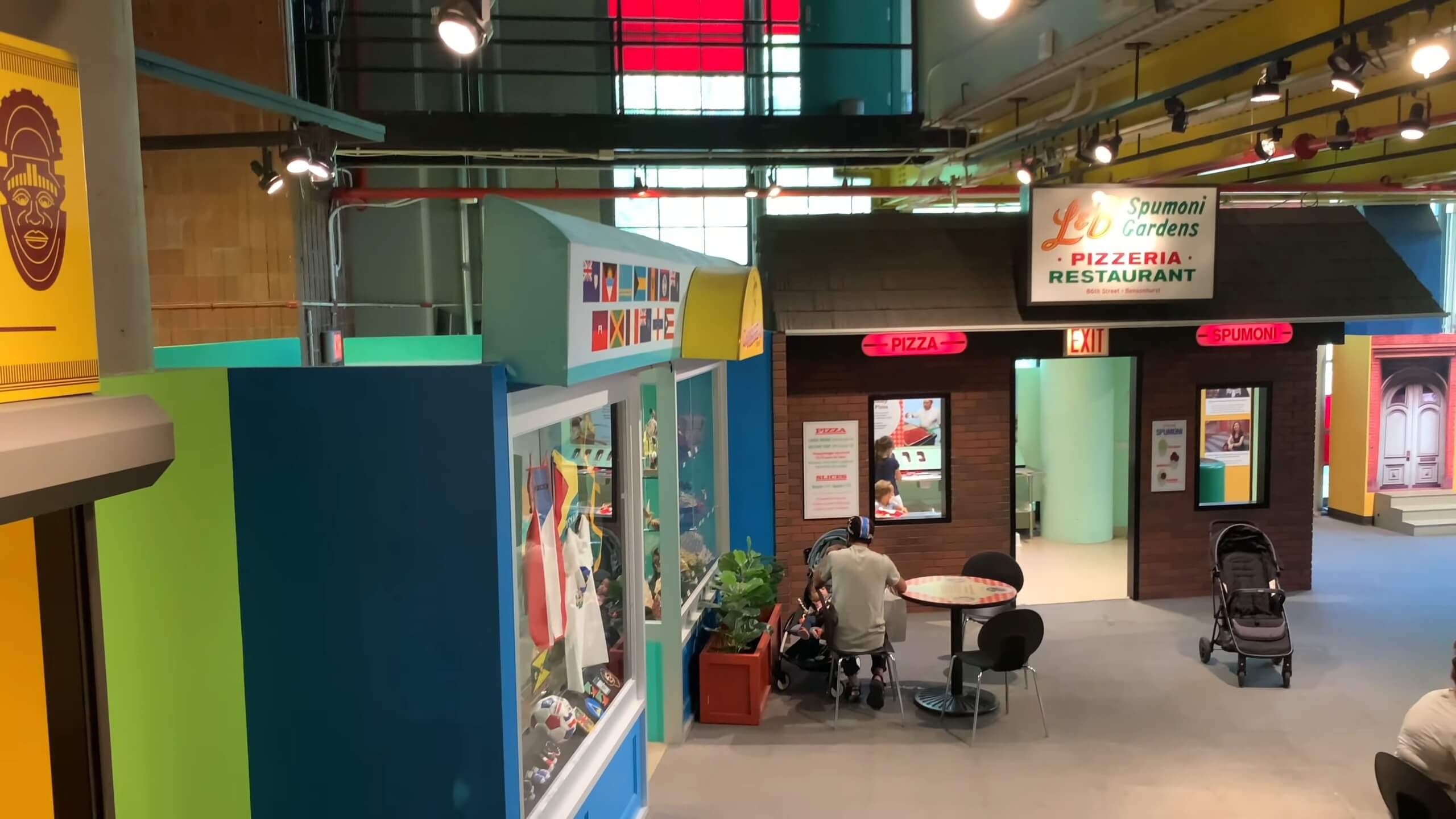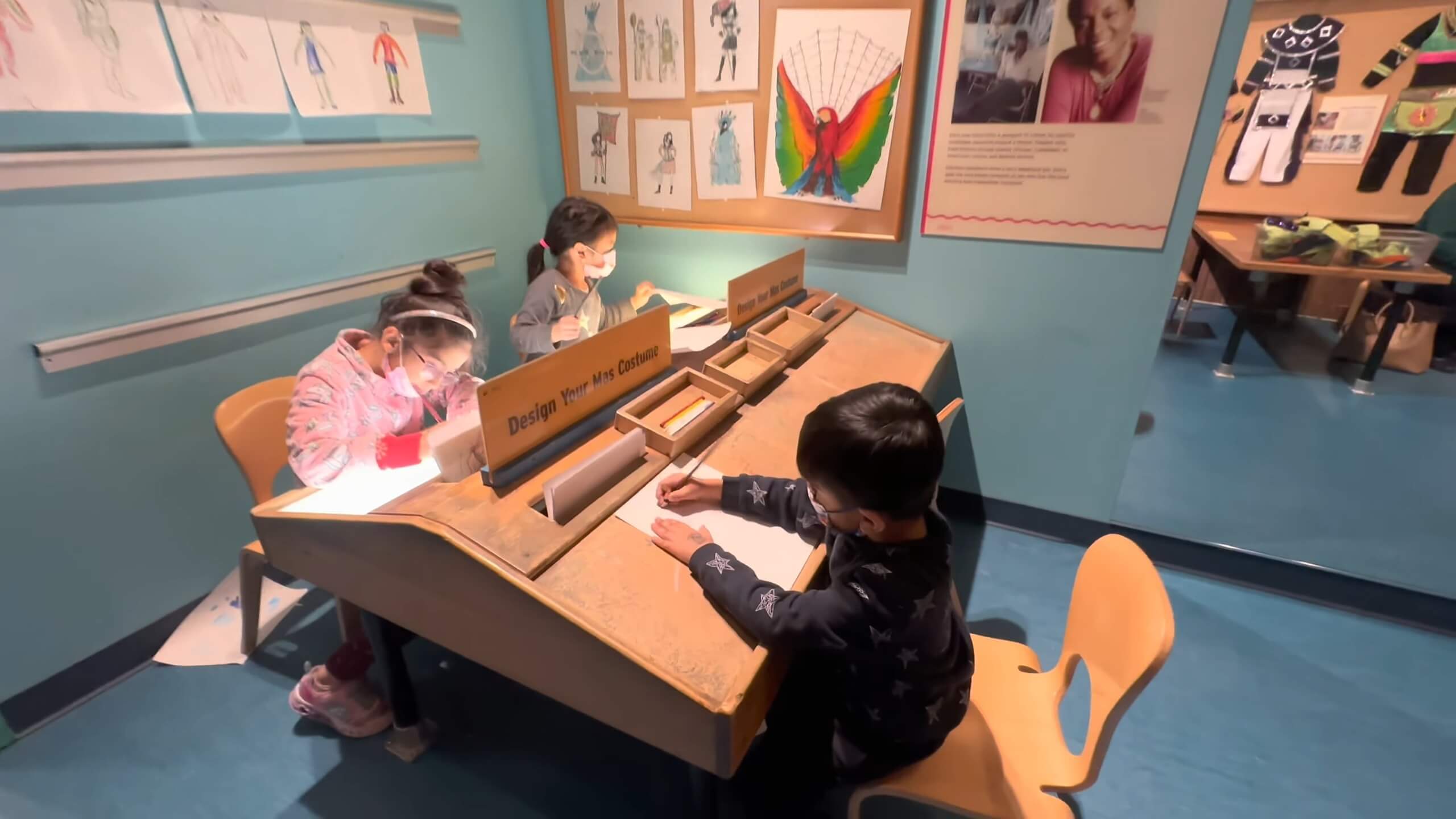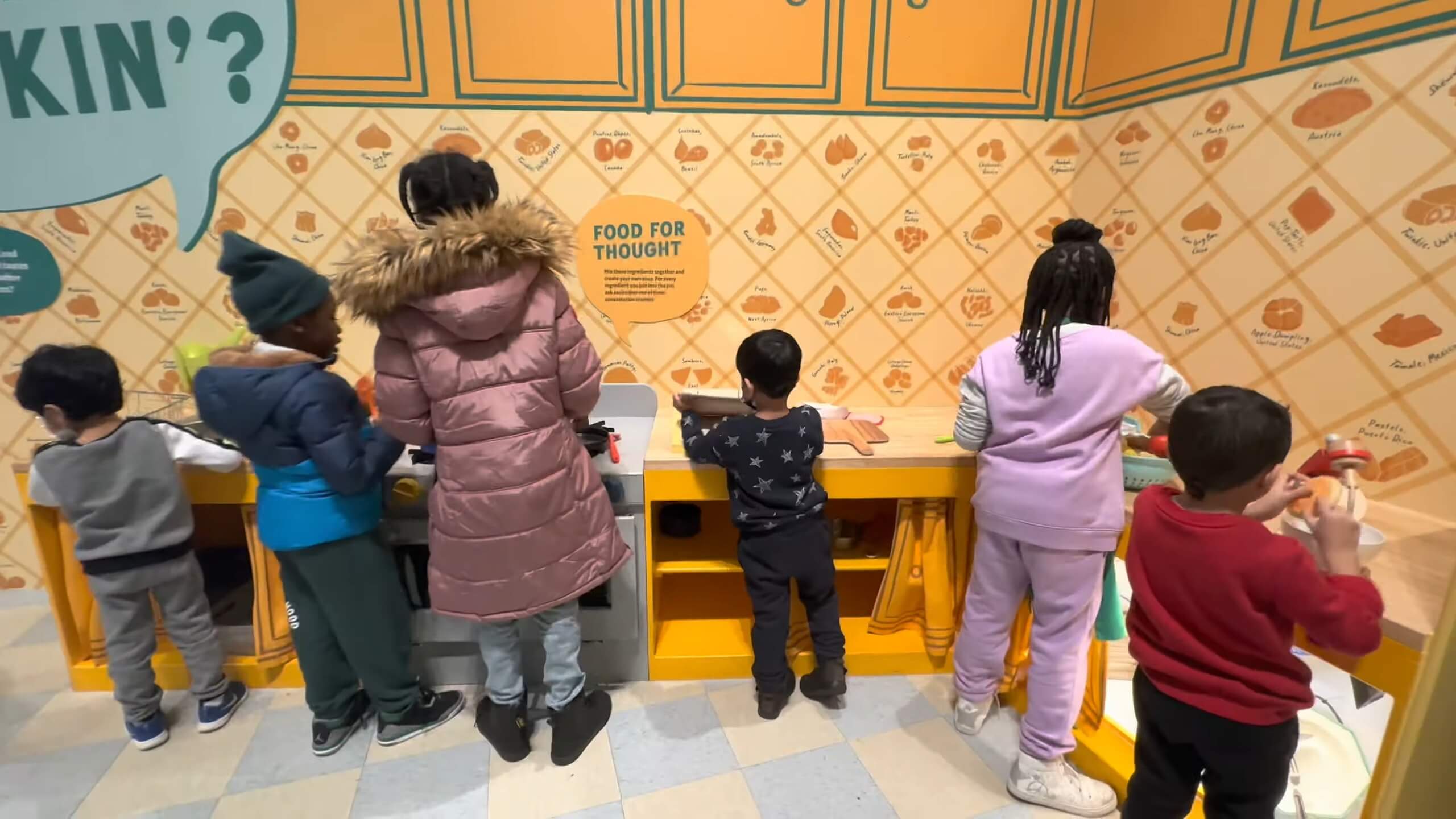Welcome to the Brooklyn Children’s Museum! Established in 1899, it holds the distinction of being the world’s first children’s museum.
It is a place that provides an engaging and educational environment for children aged 6 months to 10 years.
Located in the heart of Brooklyn, the museum offers a variety of exhibits and activities that will captivate young minds.
Today, I want to discuss everything relevant to this place.
Getting There
Finding your way to the Brooklyn Children’s Museum is easy and convenient.
We are located at 145 Brooklyn Ave, Brooklyn, NY 11213.
For those using public transport, you can take the subway and hop on the 3 train to Kingston Avenue or the A/C trains to Nostrand Avenue.
Several bus routes also serve the area, including:
- 43
- B44
If you prefer to drive, there are parking options nearby, though street parking can be limited.
Consider using a parking app to find the best spots. For ease, arrive early to secure parking and avoid the rush.
Museum Highlights
The museum boasts several unique exhibits designed to inspire and educate.
- Totally Tots:
- Tailored for children under 5, this exhibit includes water play areas, dress-up corners, and climbing structures that foster imagination and physical activity.
- Your little ones will love splashing in the water, pretending to be their favorite characters, and climbing through the various structures designed just for them.
- World Brooklyn:
- In this kid-sized neighborhood, children can explore shops like a bakery, grocery store, and pizza shop.
- These interactive environments allow kids to engage in pretend play, enhancing their understanding of community roles and responsibilities.
- Neighborhood Nature:
- This exhibit brings local ecologies to life with live animals, a cork garden, and a sand “beach.”
- It’s a fantastic way for kids to learn about the natural world around them through hands-on interaction.
- ColorLab:
- Family art studio offers hands-on creative activities.
- Children can explore different materials and tools to create their masterpieces, fostering creativity and artistic expression.
- The Nest:
- Inspired by baya weaver bird nests, this outdoor interactive structure is a favorite among visitors.
- Open during regular museum hours (weather permitting), it provides a play environment that encourages climbing and exploration.
Daily Activities and Special Events
The museum offers a variety of daily activities that cater to all interests.
From arts and crafts sessions to live performances and animal encounters, there is always something happening at the museum.
Check the special events calendar to plan your visit around celebrations like Hispanic Heritage Month and Kwanzaa, which feature programs and activities.
The daily schedule includes regular workshops and performances designed to engage children and enhance their learning experience.
Visitor Tips
To ensure a smooth and enjoyable visit, here are some helpful tips:
- Coat Check and Lockers:
- The option for coat checks and lockers to store your belongings securely.
- Best Times to Visit:
- Weekday mornings are typically less crowded. Arrive early to maximize your experience.
- Food Policies:
- Outside food is not allowed, but it has a café on-site with kid-friendly options.
- Accessibility:
- The museum is fully accessible with elevators and stroller-friendly paths. We also provide breastfeeding and private nursing spaces for your convenience.
Planning ahead will help you avoid long lines and ensure a comfortable visit for you and your family.
Educational Programs and Resources
The museum is dedicated to educational enrichment.
They offer programs for schools and camp groups, providing tailored experiences that align with educational standards.
Family Guides and Visual Thinking Strategies (VTS) help engage children with the exhibits, encouraging them to think critically and creatively.
Planning Your Visit
Planning your visit to the Brooklyn Children’s Museum can ensure that you and your family have a smooth and enjoyable experience. Here are some detailed tips to help you make the most of your time at the museum:
Duration
When planning your visit, it’s important to allocate enough time to fully enjoy all the museum has to offer.
We recommend setting aside at least 2-3 hours to explore the exhibits. This timeframe allows you to engage with the various interactive displays, participate in daily activities, and take breaks as needed.
Younger children, particularly those under 5, may tire more quickly and might only manage a shorter visit.
Conversely, older children might find themselves engrossed in the activities and exhibits, wanting to extend their visit beyond the initial 2-3 hours.
Keep in mind that the museum can be stimulating, and taking breaks for snacks or quiet time can help keep everyone in good spirits.
What to Bring
Packing the right items can make your visit more comfortable and enjoyable. Here’s a list of essentials to consider:
- Comfortable Shoes:
- You’ll be on your feet a lot, walking between exhibits and participating in activities.
- Comfortable, supportive shoes are a must for both kids and adults.
- Water Bottle:
- Staying hydrated is important, especially with all the excitement and physical activity.
- Bringing a reusable water bottle can help you keep refreshed throughout your visit.
- Camera or Smartphone:
- There will be plenty of photo-worthy moments, from your child’s first encounter with a live animal to their creations in the ColorLab.
- Make sure you have a camera or smartphone ready to capture these memories.
- Light Snacks:
- While the museum has dining options, having some light, non-messy snacks on hand can help tide over hungry kids and avoid meltdowns.
- Check the museum’s food policy to ensure your snacks are allowed.
- Small Bag or Backpack:
- Carry a small bag for your essentials.
- Avoid bringing large or bulky items, as they can be cumbersome to manage while navigating the museum.

